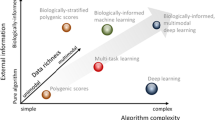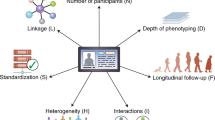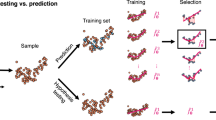Abstract
Strategies for generating knowledge in medicine have included observation of associations in clinical or research settings and more recently, development of pathophysiological models based on molecular biology. Although critically important, they limit hypothesis generation to an incremental pace. Machine learning and data mining are alternative approaches to identifying new vistas to pursue, as is already evident in the literature. In concert with these analytic strategies, novel approaches to data collection can enhance the hypothesis pipeline as well. In data farming, data are obtained in an ‘organic’ way, in the sense that it is entered by patients themselves and available for harvesting. In contrast, in evidence farming (EF), it is the provider who enters medical data about individual patients. EF differs from regular electronic medical record systems because frontline providers can use it to learn from their own past experience. In addition to the possibility of generating large databases with farming approaches, it is likely that we can further harness the power of large data sets collected using either farming or more standard techniques through implementation of data-mining and machine-learning strategies. Exploiting large databases to develop new hypotheses regarding neurobiological and genetic underpinnings of psychiatric illness is useful in itself, but also affords the opportunity to identify novel mechanisms to be targeted in drug discovery and development.
This is a preview of subscription content, access via your institution
Access options
Subscribe to this journal
Receive 12 print issues and online access
$259.00 per year
only $21.58 per issue
Buy this article
- Purchase on Springer Link
- Instant access to full article PDF
Prices may be subject to local taxes which are calculated during checkout

Similar content being viewed by others
References
Carlsson A . A paradigm shift in brain research. Science 2001; 294: 1021–1024.
Mitchell TM . The Discipline of Machine Learning. School of Computer Science: Pittsburgh, PA, 2006. Available from: http://aaai.org/AITopics/MachineLearning.
Nilsson NJ . Introduction to Machine Learning. An early draft of a proposed textbook. Robotics Laboratory, Department of Computer Science, Stanford University: Stanford, 1996. Available from: http://robotics.stanford.edu/people/nilsson/mlbook.html.
Hand DJ . Mining medical data. Stat Methods Med Res 2000; 9: 305–307.
Smyth P . Data mining: data analysis on a grand scale? Stat Methods Med Res 2000; 9: 309–327.
Burgun A, Bodenreider O . Accessing and integrating data and knowledge for biomedical research. Yearb Med Inform 2008; 47(Suppl 1): 91–101.
Hochberg AM, Hauben M, Pearson RK, O’Hara DJ, Reisinger SJ, Goldsmith DI et al. An evaluation of three signal-detection algorithms using a highly inclusive reference event database. Drug Saf 2009; 32: 509–525.
Sanz EJ, De-las-Cuevas C, Kiuru A, Bate A, Edwards R . Selective serotonin reuptake inhibitors in pregnant women and neonatal withdrawal syndrome: a database analysis. Lancet 2005; 365: 482–487.
Baca-Garcia E, Perez-Rodriguez MM, Basurte-Villamor I, Saiz-Ruiz J, Leiva-Murillo JM, de Prado-Cumplido M et al. Using data mining to explore complex clinical decisions: A study of hospitalization after a suicide attempt. J Clin Psychiatry 2006; 67: 1124–1132.
Ray S, Britschgi M, Herbert C, Takeda-Uchimura Y, Boxer A, Blennow K et al. Classification and prediction of clinical Alzheimer's diagnosis based on plasma signaling proteins. Nat Med 2007; 13: 1359–1362.
Baca-Garcia E, Perez-Rodriguez MM, Basurte-Villamor I, Lopez-Castroman J, Fernandez del Moral AL, Jimenez-Arriero MA et al. Diagnostic stability and evolution of bipolar disorder in clinical practice: a prospective cohort study. Acta Psychiatr Scand 2007; 115: 473–480.
Baca-Garcia E, Vaquero-Lorenzo C, Perez-Rodriguez MM, Gratacos M, Bayes M, Santiago-Mozos R et al. Nucleotide variation in central nervous system genes among male suicide attempters. Am J Med Genet B Neuropsychiatr Genet 2010; 153B: 208–213.
Sun D, van Erp TG, Thompson PM, Bearden CE, Daley M, Kushan L et al. Elucidating a magnetic resonance imaging-based neuroanatomic biomarker for psychosis: classification analysis using probabilistic brain atlas and machine learning algorithms. Biol Psychiatry 2009; 66: 1055–1060.
Shen H, Wang L, Liu Y, Hu D . Discriminative analysis of resting-state functional connectivity patterns of schizophrenia using low dimensional embedding of fMRI. Neuroimage 2010; 49: 3110–3121.
Hay MC, Weisner TS, Subramanian S, Duan N, Niedzinski EJ, Kravitz RL . Harnessing experience: exploring the gap between evidence-based medicine and clinical practice. J Eval Clin Pract 2008; 14: 707–713.
Unutzer J, Choi Y, Cook IA, Oishi S . A web-based data management system to improve care for depression in a multicenter clinical trial. Psychiatr Serv 2002; 53: 671–673.
Acknowledgements
Dr Blasco-Fontecilla acknowledges the Spanish Ministry of Health (Rio Hortega CM08/00170), Alicia Koplowitz Foundation, and Conchita Rabago Foundation for funding his post-doctoral rotation at CHRU, Montpellier, France. SAF2010-21849.
Author information
Authors and Affiliations
Corresponding author
Ethics declarations
Competing interests
Dr Oquendo has received unrestricted educational grants and/or lecture fees form Astra-Zeneca, Bristol Myers Squibb, Eli Lilly, Janssen, Otsuko, Pfizer, Sanofi-Aventis and Shire. Her family owns stock in Bistol Myers Squibb. The remaining authors declare no conflict of interest.
PowerPoint slides
Rights and permissions
About this article
Cite this article
Oquendo, M., Baca-Garcia, E., Artés-Rodríguez, A. et al. Machine learning and data mining: strategies for hypothesis generation. Mol Psychiatry 17, 956–959 (2012). https://doi.org/10.1038/mp.2011.173
Received:
Revised:
Accepted:
Published:
Issue Date:
DOI: https://doi.org/10.1038/mp.2011.173
Keywords
This article is cited by
-
Applications of artificial intelligence−machine learning for detection of stress: a critical overview
Molecular Psychiatry (2023)
-
Optimizing prediction of response to antidepressant medications using machine learning and integrated genetic, clinical, and demographic data
Translational Psychiatry (2021)
-
Computational psychiatry: a report from the 2017 NIMH workshop on opportunities and challenges
Molecular Psychiatry (2019)
-
The role of machine learning in neuroimaging for drug discovery and development
Psychopharmacology (2015)
-
Stabilized sparse ordinal regression for medical risk stratification
Knowledge and Information Systems (2015)



